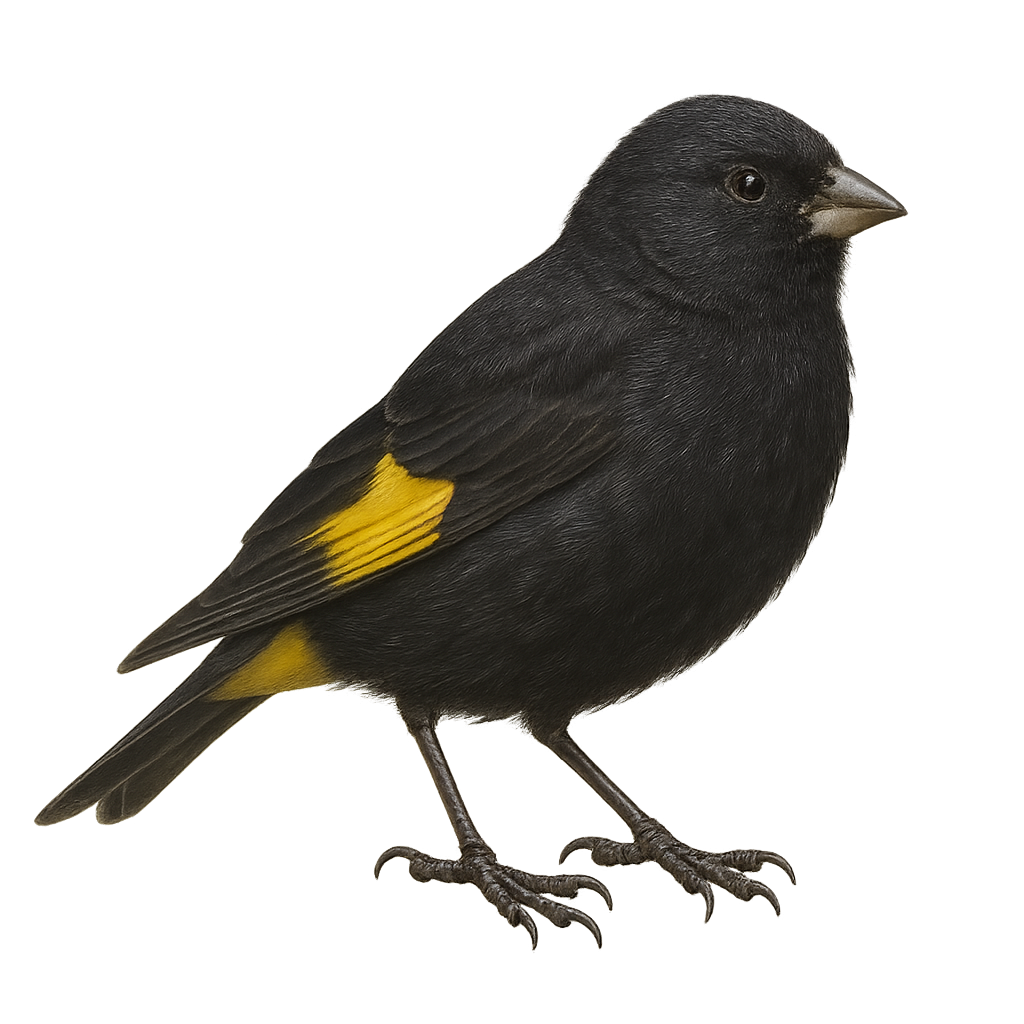Your wildlife photography guide.
Explore the black siskin in detail, study its behavior, prepare your shots.
Where to observe and photograph the black siskin in the wild
Learn where and when to spot the black siskin in the wild, how to identify the species based on distinctive features, and what natural environments it inhabits. The WildlifePhotographer app offers tailored photography tips that reflect the black siskin’s behavior, helping you capture better wildlife images. Explore the full species profile for key information including description, habitat, active periods, and approach techniques.
Black Siskin
Scientific name: Spinus atratus

IUCN Status: Least Concern
Family: FRINGILLIDAE
Group: Birds
Sensitivity to human approach: Suspicious
Minimum approach distance: 10 m
Courtship display: October to November
Incubation: 12-14 jours
Hatchings: October to November
Habitat:
High-altitude grasslands, open areas, mountainous regions
Activity period :
Primarily active during the day, with peak activity in the morning and late afternoon.
Identification and description:
The Black Siskin, or Spinus atratus, is a small finch known for its dark plumage with bright yellow patches on its wings and tail. It is primarily found in the mountainous regions of the Andes, frequenting open areas and high-altitude grasslands. This passerine is often seen in small flocks, feeding on seeds and insects. Although relatively tolerant, it remains cautious of potential threats. Its breeding season typically coincides with the rainy season when food is plentiful. The Black Siskin plays a vital role in the ecosystem by aiding in seed dispersal.
Recommended lens:
400mm – adjust based on distance, desired framing (portrait or habitat), and approach conditions.
Photography tips:
To photograph the Black Siskin, focus on open areas in the Andes where it is often seen. Use a telephoto lens of 400 mm or more to capture detailed images without disturbing the bird. Be patient and wait for it to perch on a branch or feed on the ground. Morning or late afternoon light is ideal to highlight the contrasts in its plumage. Avoid sudden movements and maintain a distance of at least 10 m to avoid scaring it away.
The WildlifePhotographer App is coming soon!
Be the first to explore the best nature spots, track rutting seasons, log your observations, and observe more wildlife.
Already 1 430 wildlife lovers subscribed worldwide

